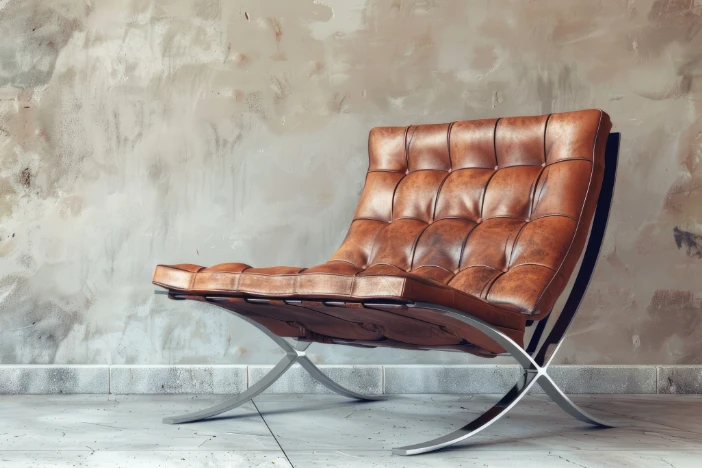
The fifth section of this thorough examination of interior design covers a gamut of aesthetics from stark simplicity to homey warmth to rigid metallic vibes.
Jacobean
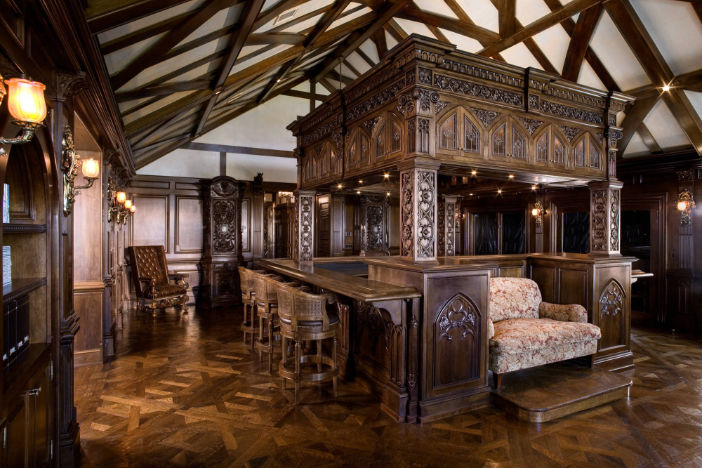
Jacobean interior design takes drama seriously—think chunky oak furniture with curves and carvings that feel practically Shakespearean. Rich, dark woods rule the room, usually finished in shades that could give your favorite espresso some competition. You’ll spot that signature turned leg, a detail as instantly recognizable in a stately home as a red carpet is at the Oscars. Chairs and tables are purposely weighty, bordering on throne-like, because subtlety isn’t exactly the Jacobean calling card. Scrollwork, geometric paneling and high-relief carving aren’t just decorative; they’re there to show off what skilled hands and a well-funded workshop can do.
Color isn’t shy, either. Deep blues, lush reds, forest greens and touches of gold dominate, especially in fabrics. Textiles are a prime detail—velvet and brocade pile on the texture while elaborate tapestries can make even the plainest wall flex like it’s Game of Thrones season one. Heraldic symbols and mythical creatures roam the surfaces, sneaking into wood panels, fire screens and drapery with the confidence of a crowned lion.
No blockbuster designer names here, but Inigo Jones made waves with architecture that oozed English Renaissance drama, often providing the stage for all this opulence to shine. If you come across a massive “court cupboard” or a formidable wainscoted chair, you’ve basically found the Jacobean equivalent of a collector’s Pokémon. Bottom line—if you want an interior style that pulls zero punches and wears its history like a badge, Jacobean’s reign is hard to dethrone.
Japandi
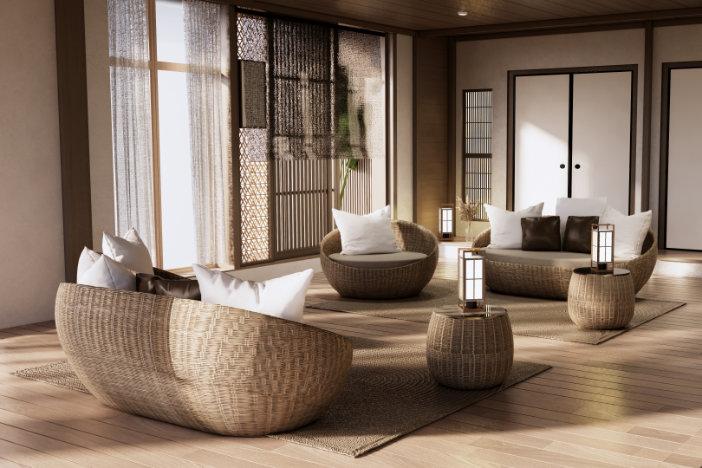
Japandi is what happens when Japanese calm and Scandinavian comfort swipe right and move in together. This style champions clean lines and low-slung profiles, offering peace without that “IKEA showroom” chill. Furniture is often handcrafted and emphasizes real materials—think pale woods, sleek cabinets and woven stools that look as if Marie Kondo arranged them with Björk humming in the background. You might spot echoes of Tadao Ando’s smooth forms or the unmistakable vibes of Alvar Aalto’s curvy bentwood stools, all about function mingling with a little flair.
Color plays it cool and earthy: whites taken straight from a Nordic winter morning, mixed with charcoal, inky blues, clays and a little sage for that zen touch. Textures love to party in Japandi—raw oak, soft linen, cozy wool and even bamboo or rattan give your senses something to do, whether you’re having tea or just scrolling through TikTok in your living room.
Shoji screens, tatami-style mats and oversized windows invite serious daylight, making each room feel a little like a meditation app turned real. Plants aren’t just décor—they’re gentle reminders to breathe (and water occasionally). Forget clutter; Japandi lets you proudly display that handmade tea bowl or an off-kilter vase—because imperfection’s never looked so good. It’s design with a pulse, soothing but practical, kind of like if Mr. Miyagi dropped by for dinner with a bag of Danish pastries.
Japanese
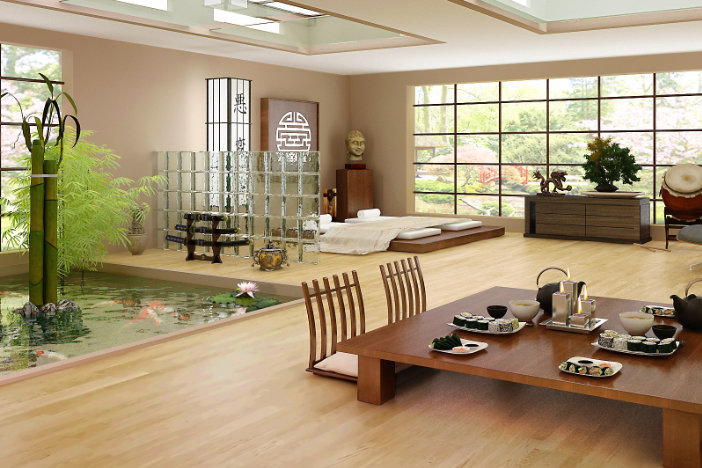
Japanese interiors channel that elusive Zen vibe, turning your home into a peaceful retreat you won’t want to leave—unless a ramen craving strikes. The signature look is all about stripped-down elegance, but there’s more happening than just clean lines and that leading-man charm. Spaces lean into sleek, straight forms with a steady calm to the architecture, but textures really warm up the place. Think tactile tatami mats underfoot, nubby linen textiles and perfectly imperfect woods that look like nature’s own artwork.
When it comes to color, Japanese interiors rarely shout; instead, expect a soothing palette of neutrals, creams and gentle charcoals, all working as a subtle backdrop to carefully chosen accents. If you spot a dash of indigo or persimmon, that’s just a wink of personality, not a color riot. Materials matter, too: walls softly glow behind washi paper, bamboo divides spaces and sturdy cedar reminds you that nature is always invited inside (miniature moss garden, anyone?).
The furniture isn’t about making a statement as much as quietly fitting in. Iconic pieces like the low-slung kotatsu table invite you to sit and stay awhile, no red carpet necessary. Legendary designers such as Sori Yanagi, known for the Butterfly Stool and Shiro Kuramata have kept the Japanese style on the design world’s A-list with sleek, functional and understated creations. The result is a space where you can tidy away your stress and still have room for that bonsai collection—quirky, balanced and a little bit timeless.
Lake House

The Lake House vibe is like that best friend who always knows how to unwind without making a big deal out of it. This look is rooted in easygoing forms—nothing too sharp or modern, more like broad plank floors, shiplap walls and silhouettes that wouldn’t mind a scuff or two. Big windows and glass doors pull in every ounce of natural light, making the scenery the unofficial decorator-in-chief. It’s less about complicated décor and more about getting the basics so right you never want to leave. The palette is classic: weathered grays, soft taupes, cool blues and creamy whites that play up the view with a touch of serenity found at sunrise on the water’s edge.
Texture is where the Lake House look really shines. Expect plenty of tactile appeal: think chunkier knits, natural rattan, unpolished stone and timber that rewards you with a little character every time you glance at it. A chunky Adirondack chair—definitely an icon—is just as likely to anchor a living room reading nook as it is to command respect on a lakeside deck.
Material choices keep it honest and laid-back, with essentials like linen upholstery, stone, metal and weather-worn wood lending both durability and personality. Outside, the aesthetic stretches seamlessly from dock to deck; setting out a fire pit ringed with those same Adirondack chairs (and maybe a plaid blanket or two) means the party—or the deep thoughts—don’t have to stop at the threshold.
As for design cred, Ralph Lauren and Thomas O’Brien have helped make this genre look as good as it feels, layering polished craftsmanship with just the right amount of “didn’t try too hard” energy. The Wi-Fi might be weak, but the style game? Always strong.
Machine Age
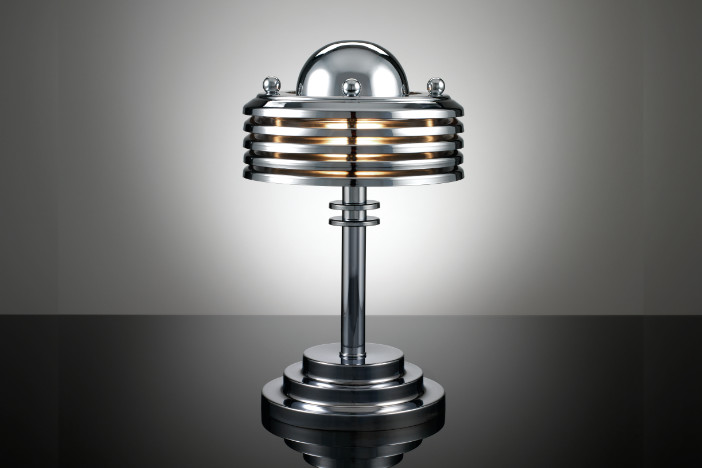
Machine Age design mixes workshop toughness with a bit of early modern style. It’s all about making spaces that work hard and look sharp without showing off. This style grew out of a hopeful time after World War I, when people believed machines and new ideas could make life better. It takes materials and attitude straight from the factory floor and uses them to shape rooms that feel smart and simple, never fussy.
Here, the form sticks to geometric shapes and strong lines—think of it as machinery-inspired, where each curve and edge has a reason. Textures are up front; brushed steel, exposed concrete and brick bring out a tough but approachable character, with reclaimed wood and a hint of leather adding some warmth (and comfort for those who dare to sit down).
Color doesn’t try to steal the scene. Grays, black and deep browns lead the way, sometimes getting a boost from navy or industrial green—just enough to keep things from feeling too chilly. Symbols like gears, lightning bolts and radio waves remind you of the era’s fascination with all things mechanical, but there’s more blueprint vibe than comic book chaos going on [Meikle 2010].
Furniture follows the same tune. Desks by Donald Deskey, Marcel Breuer’s iconic steel chairs and Raymond Loewy’s streamlined home gadgets still set the standard for pieces that look cool but feel practical. Sprinkle in an oversized vintage clock or an old industrial lamp and the room picks up a bit of story—maybe even a nod to film history, channeling the moody, futuristic vibes of Metropolis or Modern Times without going full Hollywood. Machine Age is modernism, just with a bit of factory cred and a small wink to the past.
Maximalist
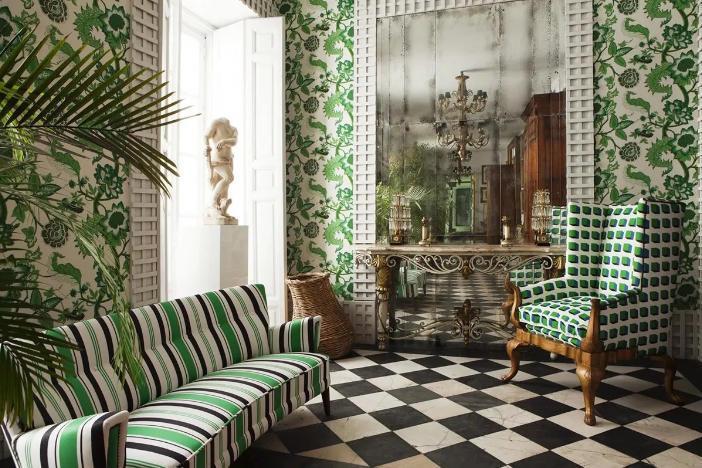
If minimalism is a subtle text, maximalism is a viral TikTok sound—bold, wild and hard to ignore but still with a plan. This style isn’t about reckless clutter; it’s about expressing personality through waves of vivid color, eye-popping pattern and a love for texture that would make any fabric store blush. Think electric emerald, deep sapphire and fuchsia battling it out with punchy wallpaper that’s practically a conversation starter. Artwork covers the walls like a cool aunt’s Instagram feed—curated, a little weird and totally memorable.
Maximalist furniture leans toward the dramatic. Imagine a chesterfield sofa in plush velvet, an over-the-top bar cart and something grand with lacquer, maybe perched next to a vintage Murano lamp. Tony Duquette could practically invent a new shade of gold each morning and Kelly Wearstler’s knack for sculptural forms and playful finishes are legendary—these are the heavyweight champs of “more is more.” You’ll see tactile mixes everywhere: shiny brass, gleaming mirror, funky shagreen, velvet and the occasional tasseled pillow or three. Dramatic lighting? Always. Over-the-top chandeliers are to maximalism what the finale is to a fireworks show.
Pattern isn’t shy—florals hang out with geometrics, animal prints flirt with stripes and somehow it all works because it’s deeply personal. That gleaming mid-century credenza or cheeky leopard-print stool may be iconic but the real star is the story each piece tells. Maximalism throws out the beige rulebook and lets you star in your own Technicolor dream room—sequins optional but recommended.
Medieval
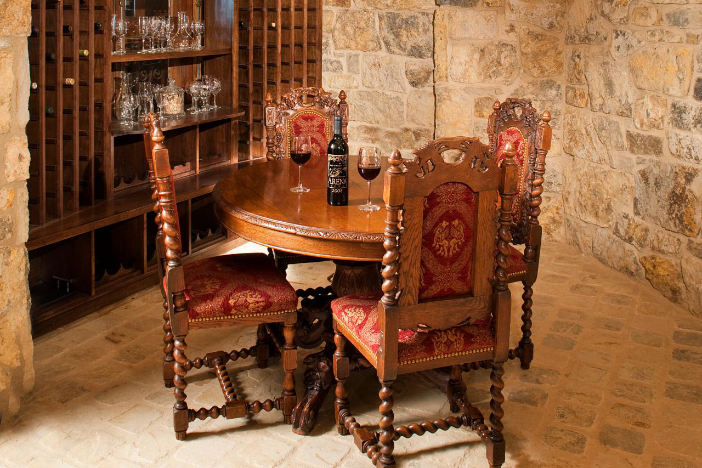
Medieval interior design takes the grandeur of the past and brings it indoors—minus swordfights and knightly brawls. This style owes a lot to Gothic architecture’s dramatic arches and towering forms, but don’t worry, no dragons allowed. What anchors Medieval spaces are their unmistakably solid shapes—think chunky, carved wood rather than dainty curves. The furniture looks built for banquet feasts or secret strategy sessions, with massive trestle tables and high-backed chairs that command attention. Four-poster beds with heavy canopies often evoke that noble, straight-out-of-a-castle vibe and sometimes you half-expect a bard to wander in.
If you’re looking for delicate textures, you won’t find them here. Medieval’s tactile playground comes from rough-hewn beams, stone, wrought iron and hammered metal, all coming together in a rich, almost fortress-like mix. Tapestries, which in their day doubled as extra insulation (no central heating back then), show off everything from heraldic shields to bold tales of old. Metal curtain rods, thick trims and antique iron fixtures keep the look anchored and authentic.
Don’t forget the color—this style never shies away from deep, moody shades. Burgundy, hunter green, royal blue and gold all crowd in to give a jewel-toned intensity, often amplified by stained glass windows that make any sunlight look fit for a royal court.
If you’re looking for hotshot designers, the Middle Ages missed out, but centuries later, William Morris and the Arts & Crafts crowd brought Medieval motifs roaring back. Shows like Game of Thrones and The Witcher might have revived the fantasy, but for true fans, a well-placed carved oak piece says more than a dragon ever could. Medieval design is proof that “living large” isn’t just for modern times.
Mediterranean
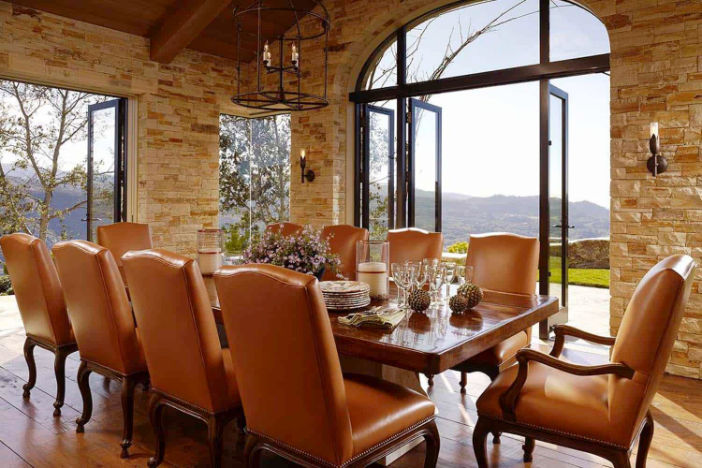
Mediterranean interiors make it easy to live in a vacation frame of mind—no need to check the weather app first. The look borrows its relaxed mood from the coasts of Spain, Greece and Italy, favoring comfort over fuss. Here, shapes curve, arches soften corners and spaces feel welcoming enough that even your neighbor’s cat would approve.
Color is the hero that never takes a day off—terracotta, cobalt blue, olive green, sandy beige and crisp white mingle together like they RSVP’d for a sunshine convention. Materials are refreshingly honest: expect hand-smoothed plaster, chunky beams and mosaic tiles that provide more personality than your favorite mug.
Texture is always part of the party, with nubby linens, rough stucco and iron accents inviting you to reach out and touch every surface (go ahead, it’s allowed). The furniture keeps things grounded, often low-slung with wooden frames and sometimes sporting that trademark camelback shape or a little iron scrollwork—great for looking elegant, quietly judging your dance moves and hiding olive oil stains.
Designers like Renzo Mongiardino brought drama and layers to the Mediterranean scene, while Axel Vervoordt whispered a calmer, pared-back version. Both left their mark so you don’t have to.
Outdoors, a few mosaic tiles, a pergola or a swishy curtain instantly turns your patio into a retreat fit for putting your feet up and pretending you planned your life this way. No passport needed, but snacks are highly encouraged.
Memphis
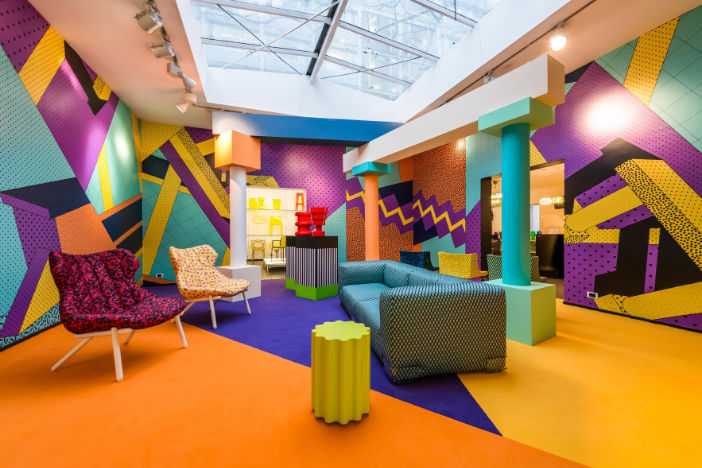
If you think the Memphis style is shy, think again—this is design that struts, not strolls. Pioneered in the early 80s by Ettore Sottsass, the Memphis movement smashed design rulebooks with glee and replaced beige-on-beige calm with high-wattage irreverence.
Forms in Memphis interiors love to break the grid: you’ll catch blocky geometrics colliding with curvy squiggles, all with a madcap sense of scale that makes a traditional settee look practically stuffy. Don’t expect feng shui or restful minimalism here—the beauty is in the playful chaos, intense layering and just a dash of pop art flair that makes each room feel like its own little episode of design television from an alternate universe.
Glossy plastic laminate, terrazzo specks and even commercial-grade MDF get their moment in the sun, with surfaces that dare you to touch. Visual texture often comes from the iconic “bacterio” squiggle or brash candy-colored stripes, which mingle with contrasting blocks of cobalt, cherry red, acid yellow and teal—the kind of palette that outshines even Pee-Wee’s Playhouse.
Legendary Memphis pieces—like Sottsass’ instantly recognizable Ashoka lamp or his totemic Carlton bookcase—combine sculpture and storage with a wink. Designers like Michele De Lucchi, Nathalie Du Pasquier and Paola Navone all rode this wave, turning interiors into experimental, joyful art installations. It’s an aesthetic that still pops up in today’s fashion and street art, proof that Memphis never really left the building, it just found a new way to crash the party.
Mexican
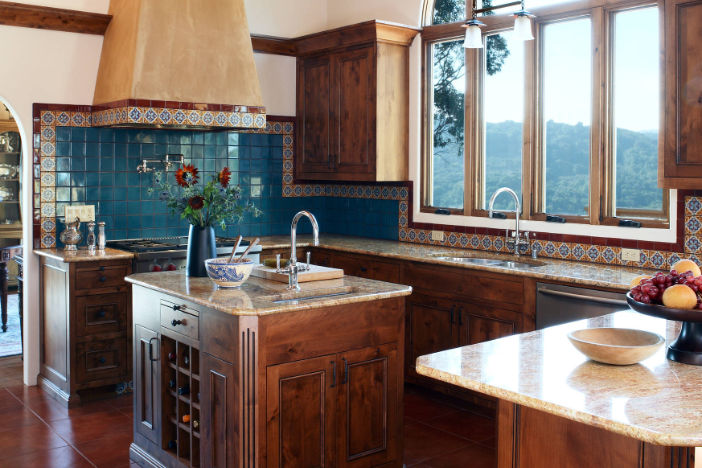
Mexican interior design feels like a party for your eyes. It’s bold, colorful and packed with local style. Vibrant walls shine in orange, green and red—sometimes the color even outshines a Diego Rivera mural and that’s saying something. Everything looks bright but never feels messy.
The secret? A smart mix of rough textures and natural materials. You’ll spot chunky wood beams, cool clay tiles and handwoven fabrics that bring the outdoors in. It feels relaxed, warm and full of life—a space that’s always ready for some fun.
The feeling is relaxed yet elegant, a balancing act where smooth Talavera tiles cool off the heat of embroidered Otomi pillows and worn leather chairs. You’ll spot iron and copper accents, hand-carved furniture and earthy materials like mesquite and reclaimed pine easily holding their own next to Spanish colonial curves or a touch of modern flair. When you sink into an Equipale chair or lounge on an Acapulco chair (the rock stars of indoor-outdoor living), you’re channeling mid-century beach club cool. Every Talavera tile tells a technicolor story passed down since the 1600s and every woven rug or pottery piece is basically an Instagram filter for your floor.
For the mix masters and design nerds out there, talk of Luis Barragán’s emotional minimalism or Maye Ruiz’s playful flourishes comes up almost as much as a telenovela plot twist. Mexican interiors are more than a style—they’re a mood, best served with guac and a side of joy.
Mid-Century Modern
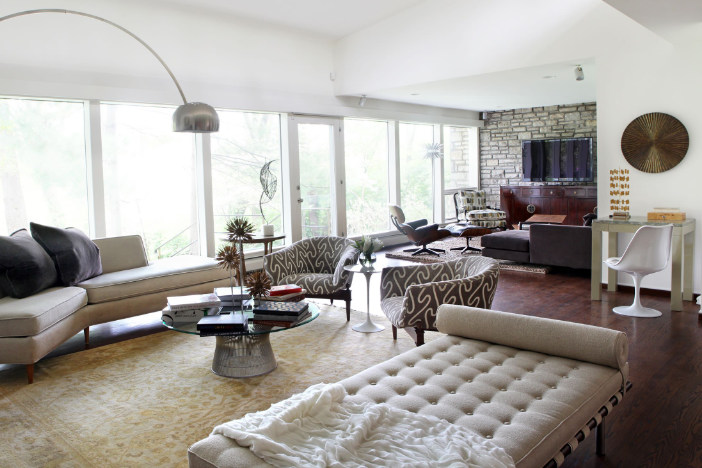
Mid-century modern isn’t just a design style—it’s a whole vibe, like Don Draper giving one of his smooth Mad Men pitches. It started in the 1940s after the war and stayed cool through the ‘70s. Known for clean lines, open spaces and a big love for natural light, it’s design with serious swagger. Architects and designers aimed to erase the boundaries between inside and out. Sliding glass doors? Check. Floor-to-ceiling windows? Double-check. Let’s face it, curtains are just distractions from the main event—the view.
Let’s talk shape. The mid-century modern form is streamlined and balanced, never clinical. Pieces sit low with iconic tapered legs and inviting, organic curves. Imagine the sculptural Tulip table by Eero Saarinen, the Eames lounge chair that’s practically a celebrity cameo in itself or George Nelson’s quirky Marshmallow sofa [Attfield 1997]. Function always keeps up with fashion. Materials like molded plywood, fiberglass, steel and leather give it an industrial edge but it never feels cold, thanks to plenty of walnut and teak lending rich warmth.
Texture is all about harmony. Surfaces are smooth, finishes stay honest, but there’s always room for a shag rug to keep things interesting. Color ranges from earthy neutrals to lively hits of mustard, avocado or peacock blue—one foot in nature, the other dancing on Andy Warhol’s palette. Geometric patterns make a statement but never steal the show.
Want the hall of fame? Think Frank Lloyd Wright, Arne Jacobsen, Isamu Noguchi, Hans Wegner and of course, Mies van der Rohe—the OG of “less is more.” Mid-century modern is more than nostalgia: it’s timeless swagger in every square foot.
Minimalist
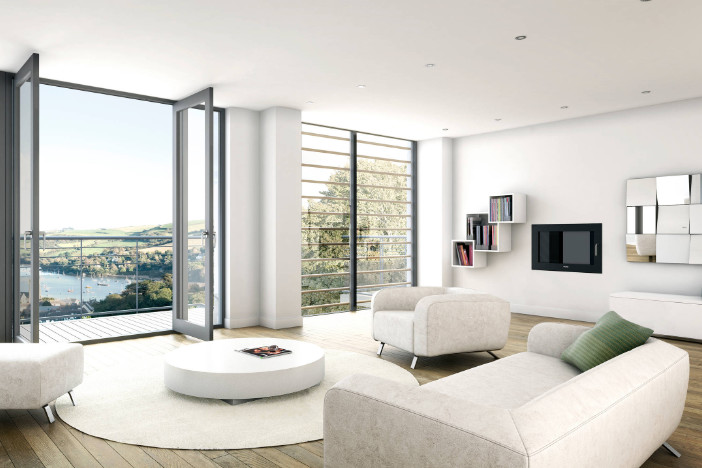
Minimalist interior design is about purposeful simplicity. A minimalist home feels like a breath of fresh air, favoring open space over “stuff” and refusing to let clutter steal the show. The moment you step in, you’ll notice clean architectural forms, sleek furnishing and a sense that every piece knows its place and its job—Marie Kondo would approve.
Walls and floors in minimalist spaces keep it neutral, loving nothing more than whites, creams, beiges and soft grays. These subdued tones make rooms feel bigger, brighter and just a little sophisticated—picture a Scandinavian crime drama, but less murdery and more serene. The magic’s in the texture, not flashy color. Think natural wood grains, nubby wool, cool stone, polished concrete or even clear acrylic. Each surface is chosen for quality and tactility, not for shouting “look at me.” Texture is how minimalism brings coziness to the uncluttered table.
Minimalist design lets the shape of things do the talking. Sofas and storage come with sharp edges or gentle curves, but never fussy details. You might spot iconic classics like the Noguchi Coffee Table or Eero Saarinen’s Tulip Table. Donald Judd’s blocky chairs and John Pawson’s architecture are minimalist legends, with a knack for elevating understatement to an art form, along with influence from Japanese masters like Tadao Ando. In a world that’s always hustling, minimalist interiors are that chill friend who brings good vibes and never overstays their welcome. Now that’s a power move.
Mission

Mission style draws its roots from the Arts and Crafts movement and proves time and again that true elegance doesn’t need a megaphone—just good bones and honest materials. Here, nothing is hiding under ruffles or gold leaf. Lines are straight and decisive, with right angles and flat panels making rooms feel both grounded and calm. The stars of the show are solid oak, quarter-sawn for that dramatic grain, occasionally joined by cherry or maple. Mortise-and-tenon joinery and visible, hand-hammered metal hardware steer clear of shortcuts, making each piece seriously sturdy and built for the ages.
Color in Mission interiors is less about flash, more about drawing you in. Warm creams, soft clays, deep olives and russet browns echo the hues of clay, earth and sunbaked missions. Wood grain isn’t shy—transparent finishes let it stand out and textured linen or simple wool offer just enough tactile contrast. A Mission home’s neutral walls might get some subtle flair from nature-themed wallpaper if the mood strikes, but no one’s going overboard.
Iconic furniture is where Mission flexes a little. The Morris chair, an early recliner with slatted wood arms and a plush seat, basically made relaxing an art form before it was a household expectation. Gustav Stickley is the name you’ll hear if you hang around antique shops and the Roycroft community helped keep the bench warm for American craftsmanship. If you want the real Mission origin story, look to A.J. Forbes and his chairs for the Swedenborgian Church—simple, strong and, frankly, pretty “chairismatic”.
So, Mission style just sits back and lets quality do the talking in a world full of plastic imitations and fleeting trends.
Modern
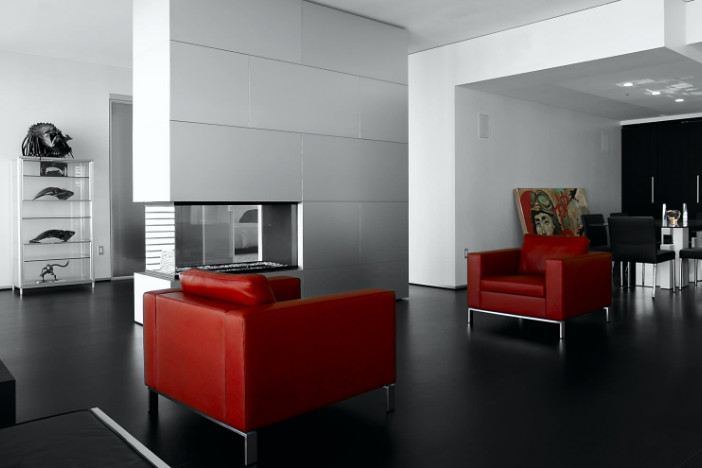
Modern interior design isn’t just about looking cool, though let’s admit it, it does that pretty well. The heart of modern is all about honest materials, easy-going forms and spaces that breathe. Think open layouts with nothing fussy in sight, where geometric clean lines set the pace. The focus is on function as much as form, so you’ll see lots of rectangular and blocky shapes strutting their stuff without any of the frills.
Texture is where things get quietly exciting. You’ll find natural woods, smooth metals and glass put together with care, often side by side with soft leathers or perhaps the surprising touch of molded plastic. It’s like a James Bond set if he swapped the gadgets for Danish credenzas. Color palettes love to keep it chic with whites, grays and earthy neutrals, but every now and then a bright orange or teal will drop in—think of it as modern’s version of an unexpected TikTok dance cameo.
Materials matter—a lot. Bent plywood, chrome, steel, even polished concrete and absolutely no shame in showing off a little plastic if it gets the job done. Famous designers? You’ve got Charles and Ray Eames, Mies van der Rohe and Le Corbusier sitting at the top table, just casually changing design forever. Those Eames lounge chairs aren’t just furniture—they’re icons.
The modern magic flows outside too, framing patios with sleek benches or low-slung loungers that look like they came straight out of The Matrix, making backyards almost as cool as your living room. If you appreciate style with substance (and a splash of movie-worthy vibes), modern gets the last word.
Modernist
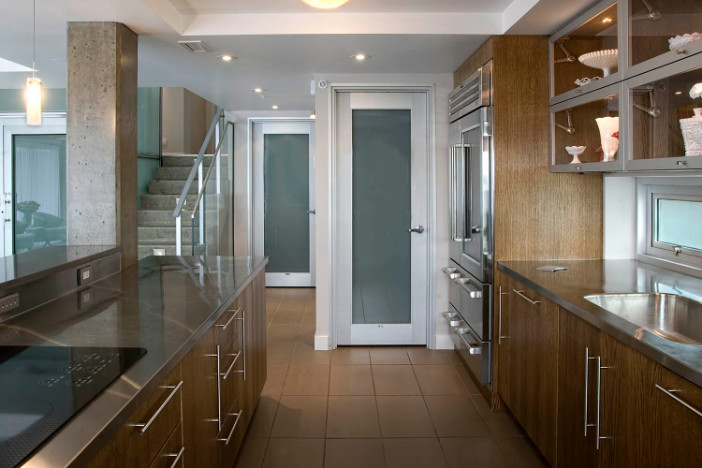
Modernist interior design has been cool since the early 1900s. It shows up with open spaces, clean lines and a clear love for the “less-is-more” way of living. You’ll see it in strong geometric shapes, solid steel frames, bold concrete and simple glass that doesn’t try to be anything fancy.Smooth leather, natural wood with visible grain and the cool touch of metal or stone create a room that’s comfortable but never stuffy. Modernist color palettes love their neutrals—think soft whites, sleek grays, maybe a nudge of black—letting the architecture and a rebellious splash of primary color do all the talking. Patterns show up but they don’t campaign for attention, usually sticking to bold graphics or totally solid looks.
You can spot iconic Modernist furniture like Arne Jacobsen’s Egg Chair, Marcel Breuer’s Wassily Chair or Le Corbusier’s LC2 Armchair—the kind of pieces that would look at home in a Bond lair or Iron Man’s headquarters and never out of style. Designers like Le Corbusier, Walter Gropius and Mies van der Rohe helped shape this style. They kept it simple, full of light and always cool.
However, don’t confuse Modernist with modern design. Modernist comes from history and sticks to Bauhaus and mid-century roots. Modern design is more flexible and brings in new trends, tech and maybe even a little TikTok flair. If Modernist is the OG, modern is the remix—welcoming textures like plush fabrics, warmer tones and maybe (gasp) a little more stuff on the side table. Both keep things simple but Modernist aims for structure and integrity, while modern is happy to flex and refresh its look for today.
Moroccan
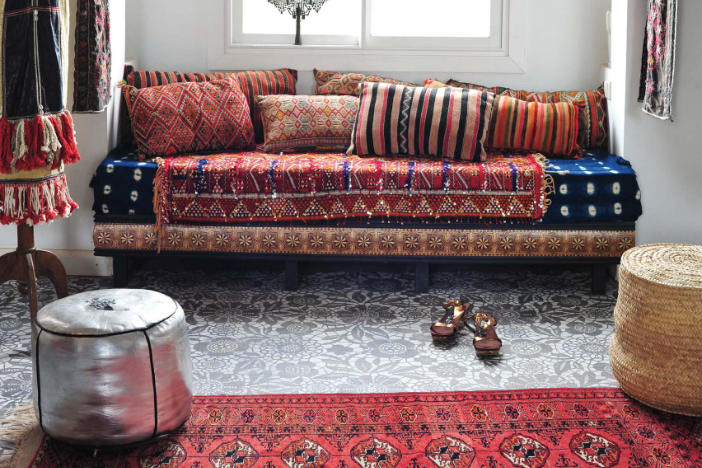
Moroccan interiors turn up the volume on character, but it’s less boho chaos and more Aladdin-meets-high-style. This look is instantly recognizable thanks to arched doorways, carved latticework and cozy nooks perfect for spilling tea or secrets. Form is always about curves and detail—don’t be surprised if a chair looks like it belongs in a sultan’s palace or a riad’s courtyard. The textures are where the magic really happens: velvety cushions, silken throws and hand-knotted rugs that could make even a Kardashian jealous show up alongside hammered metal trays and mosaic-tiled surfaces. Color isn’t shy here, diving headfirst into rich sapphire, ruby and amethyst, with terracotta and soft golds tying things together like a perfectly worn-in leather pouf.
Moroccan lanterns with their fancy metalwork and colored glass don’t just light up a room—they really know how to set the mood. Tadelakt plaster gives walls a soft, old world vibe that feels a bit like stepping back in time. Zellige tiles are the scene stealers though, shining with bold colors and crazy-detailed patterns that make even the floor worth showing off. Outdoors, this style works wonders in a patio setup—just throw down a Berber rug, scatter poufs and let a carved wood table set the vibe for endless mint tea sessions.
Moroccan lounges and brass tea tables stand out and fans of high-end design might nod to Bill Willis, whose work in Marrakech effortlessly blended Moroccan traditional flair with global glam. If you want flavor without fuss, that’s the Moroccan way—equal parts history, hospitality and unapologetic color.
Guide Sections
References

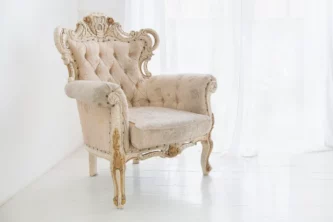
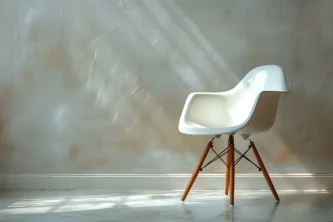
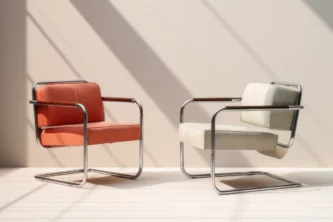
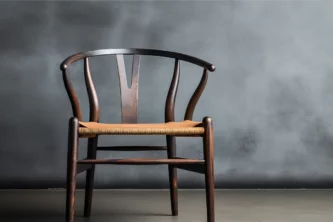
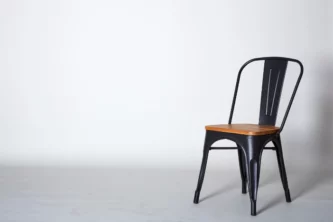
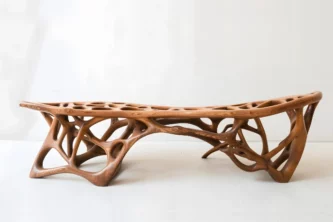
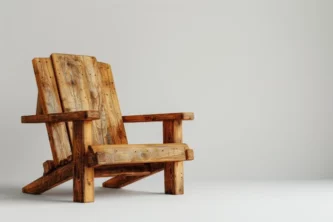
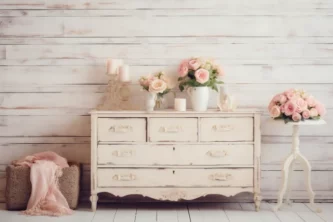
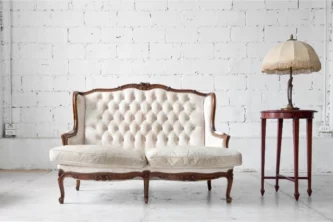




Leave a Reply